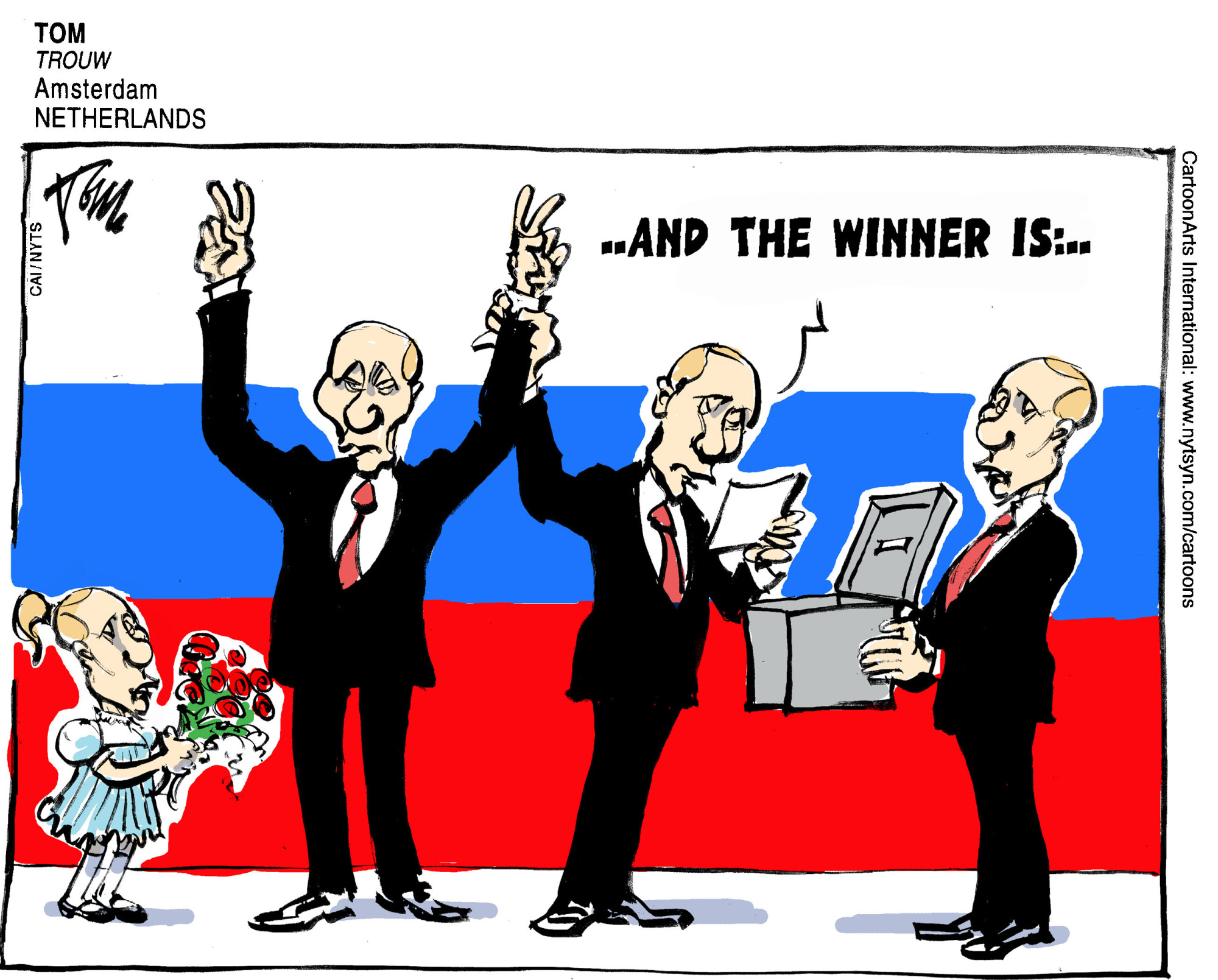The Russian presidential election that took place on Sunday was a fake one, but its outcome is real enough. It clearly demonstrated that a majority of Russians accept the rules imposed on them by President Vladimir Putin. That in itself is a kind of democratic choice, with clear implications for Putin's enemies inside and outside Russia.
The election was fake because Putin's most vocal and most politically talented rival, Alexei Navalny, wasn't allowed to run because of a trumped-up criminal conviction. It was fake because the "opposing candidates" were hand-picked by the Kremlin and because the majority of Russian media are under direct or indirect Kremlin control. It was also fake because of a fierce administrative pressure on Russia's millions of government-dependent voters — public servants, students, workers at state-controlled enterprises — to turn out, and because at many polling stations, especially those where the fragile Russian opposition had no observers, ballot boxes were stuffed.
There are, however, fewer reasons this time around than in several previous elections to describe the outcome as fake, too. Sergei Shpilkin, a physicist and electoral statistician who convincingly demonstrated irregularities in previous vote outcomes, noted that the vote falsification level was "likely at a record low" and close to what he'd seen back in 2004, during Putin's second, conflict-free election. According to Shpilkin, up to 8 million votes may have been added to the actual count.

















With your current subscription plan you can comment on stories. However, before writing your first comment, please create a display name in the Profile section of your subscriber account page.